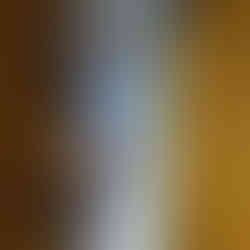"Alliums" for winter colour
- susankavanagh
- Nov 4, 2019
- 2 min read
It's the time of the year when some of my perennials disappear into the ground. This year I've decided to mark their positions with some cute fake alliums, which I've made myself.
Firstly, I must acknowledge that this idea is not my own. I saw it on Flea Market Gardening and decided to try it for myself. But I was puzzled about why everyone had used golf balls, which seemed like a lot of hard work, so I decided to try some alternatives. Here are the results:
Ball materials
I tried different types and sizes of rubber balls with nails , a golf ball with screws, a tennis ball and florist's dry foam balls with golf tees.
Above left to right: Bouncy rubber ball, golf and soft rubber balls, golf ball (in clamp for drilling), dry florists' balls.
RUBBER BALLS
Pros: cheap, nails or tacks can be pushed in by hand. Softer rubber balls worked well (they need to be firm enough to push nails in but not too bouncy).
Cons: harder, bouncy rubber balls tended to crack open, particularly the smaller ones. The larger ones survived better.
GOLF BALLS
Pros: very robust, once drilled screws can be inserted with a manual screwdriver
Cons: you will need to drill holes for the screws and stem
TENNIS BALLS
Pros: none
Cons: a complete non-starter. How did I get to my age without realising that these are hollow?
FLORISTS' DRY BALLS
Pros: very easy to push golf tees into. Made a much larger "allium" which adds some interest.
Cons: not very robust. Limited number of golf tees because they start clashing with each other inside the ball. Needed several coats of paint because the material tended to absorb this.
Above left to right: small bouncy rubber ball falls apart, soft rubber ball, golf ball.
I also tried different sticks - natural bamboo and plant sticks. Plant sticks were my favourite because they seemed to be stronger and were certainly straighter. To put them into the balls I found sharpening one end with a pencil sharpener helped:
Paints
I tried a selection of spray paints as shown below:

The bronze and white paints worked best, adhering to all surfaces without cracking and withstanding rain. The gloss paints worked reasonably well too; for some reason the blue worked best. The metallic spray paint didn't work brilliantly, it had a tendency to crack on the rubber balls and weather away rather quickly as you can see from the following photo:

The finished articles
Above left to right and top to bottom: soft rubber ball, 3 x florists' balls, golf ball, florists' ball in situ, various, 3 x balls in situ
Verdict
Despite the need to drill holes in it, the golf ball was by far my favourite. With the aid of a clamp it's actually fairly easy to drill the holes, and once you've done this the screws go in easily. Robust, easy to paint and nice looking, I can now understand why this is the preferred design!



































Comments